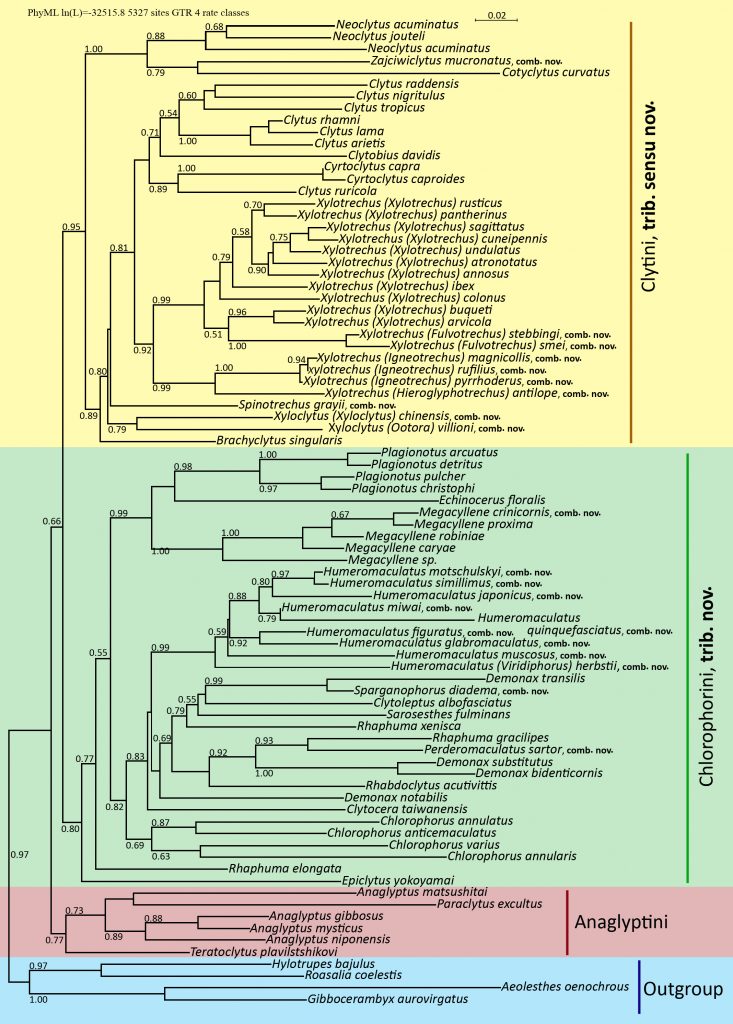Tribe Clytini (Coleoptera: Cerambycidae) is one of the largest within the long horn beetles, comprising over 1500 species. Until now, the tribe was considered monophyletic, despite the fact that it combines several different morphological groups. Morphological data alone could not shed enough light on the taxonomy and phylogeny of Clytini. The data for the last decade on molecular phylogenetics have challenged the Clytini monophyletic hypothesis. In the recent paper, wich was published by Andrew Zamoroka, Associate professor of our Department, it is presented the results of a comprehensive phylogenetic analysis of Clytini based on the three mitochondrial genes 12S rRNA 16S rRNA COI and two nuclear genes 18S rRNA 28S rRNA. The results of the analysis with high reliability confirmed the hypothesis of polyphyly of Clytini. The tribe includes two phylogenetically different and morphologically distinct evolutionary branches. Dr. Andrew Zamoroka proposed new phylogenetic systematics of Clytini, including 1 new supertribe, 1 new tribe, 4 new subtribes, 3 new genera, 4 new subgenera, 3 new statuses, 22 new combinations, 2 new synonyms with redescription 1 tribe and 3 genera.
Phylogenetic analysis revealed polyphyly of tribe Clytini

